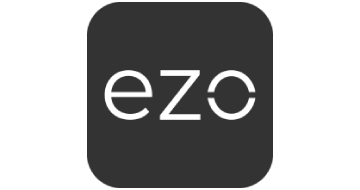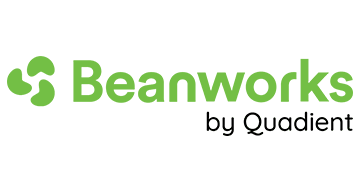What is Asset Management Software?
Asset management software tracks, maintains, and optimizes physical assets within organizations. The technology manages equipment, machinery, vehicles, IT hardware, and facilities infrastructure efficiently.
Modern platforms provide complete asset portfolio visibility. They offer real-time tracking for asset location, condition, utilization rates, and performance metrics. These systems streamline maintenance through automated scheduling, work order management, and predictive maintenance algorithms that prevent costly equipment failures.
The software enables data-driven decisions through detailed analytics. Organizations can analyze asset performance, maintenance costs, depreciation schedules, and replacement planning. This intelligence optimizes asset utilization, extends equipment lifespan, and reduces operational costs while maintaining compliance with industry regulations.
Advanced platforms integrate with ERP systems, accounting software, and maintenance management tools. They incorporate IoT sensors, barcode scanning, RFID technology, and mobile applications for automated data collection and improved accuracy.
How Much Does Asset Management Software Cost?
Asset management software pricing depends on organization size, asset volume, features, and deployment preferences. Providers offer flexible pricing models to accommodate different business needs and budget requirements.
Pricing Models and Investment Guidelines
| Pricing Model | Price Range | Best For | Key Characteristics |
|---|---|---|---|
| Per-User Subscription | $25-$150/user/month | Teams with many users | Full feature access, user management, scalable licensing |
| Per-Asset Pricing | $2-$10/asset/month | Large asset inventories | Cost scales with asset count, fewer user limitations |
| One-Time License | $5,000-$100,000+ | On-premises deployment | Perpetual use rights, high customization options |
| Enterprise Custom | Variable pricing | Large organizations | Tailored features, dedicated support, implementation services |
Small Business Investment
Organizations typically spend $500-2,000 monthly for basic asset tracking capabilities. This includes essential features like inventory management, simple reporting, and basic maintenance scheduling. For comprehensive small business software solutions, consider exploring our dedicated guides.
Mid-Market Investment
Companies usually invest $2,000-10,000 monthly for comprehensive features and multi-location support. Advanced analytics, integration capabilities, and specialized industry features are included at this level.
Enterprise Investment
Large organizations may spend $10,000-50,000+ monthly for comprehensive asset lifecycle management platforms. These solutions include advanced analytics, extensive integration capabilities, and dedicated support services. Learn more about enterprise software solutions for large-scale implementations.
Additional costs include implementation services, data migration, user training, and ongoing technical support. Most organizations achieve return on investment within 6-18 months through reduced maintenance costs, improved asset utilization, and decreased equipment downtime.
Who Should Use Asset Management Software?
Asset management software delivers value across numerous industries and organizational functions. Different sectors benefit from specialized features that address their unique operational requirements.
Facilities and Property Management
Building managers and facilities teams use asset management software to maintain HVAC systems, elevators, security equipment, and building infrastructure. The software helps track maintenance schedules, manage vendor relationships, and ensure regulatory compliance across portfolio properties. Consider exploring facility management software for specialized solutions.
Information Technology Departments
IT teams utilize these platforms to maintain comprehensive inventories of hardware assets, software licenses, and network equipment. The systems track warranty information, license compliance, and refresh cycles while providing automated alerts for upcoming renewals and replacements. For comprehensive IT management, explore our IT service management software reviews.
Manufacturing and Industrial Operations
Manufacturing facilities depend on asset management software to monitor production equipment, machinery, and industrial systems effectively. The platforms enable predictive maintenance programs, track spare parts inventory, and minimize unplanned downtime that disrupts production schedules. Learn about manufacturing software solutions for industrial operations.
Transportation and Fleet Operations
Fleet managers leverage asset management software to track vehicles, monitor fuel consumption, and optimize route planning. The systems provide insights into vehicle utilization, maintenance costs per mile, and regulatory compliance requirements for transportation operations. Explore specialized fleet management software for transportation needs.
Healthcare and Medical Facilities
Healthcare organizations use these platforms to track medical equipment, manage biomedical maintenance programs, and ensure regulatory compliance. The systems help hospitals maintain FDA compliance, track equipment calibration schedules, and optimize capital equipment investments while ensuring patient safety. Review healthcare software solutions for medical facilities.
Educational Institutions
Schools, universities, and educational districts implement asset management software to track campus equipment, technology assets, and facility infrastructure. The platforms help educational institutions optimize limited budgets, maintain accurate insurance records, and comply with safety regulations. Discover education software for academic institutions.
Government and Public Sector
Government agencies utilize asset management software to track public infrastructure, fleet vehicles, and facilities across multiple departments. These systems ensure accountability for public assets, optimize maintenance budgets, and provide transparency in asset utilization and spending.
Leading Asset Management Software Solutions
Based on our comprehensive evaluation methodology and real-world testing, here are the top asset management software platforms we’ve reviewed that consistently deliver value across different organizational needs:
Enterprise & IT-Focused Solutions
- NinjaOne IT Asset Management: Complete control over hardware and software assets with automated discovery, real-time tracking, and reporting integrated into a comprehensive IT management platform.
- ManageEngine Solutions: IT management suite including OpManager for network monitoring and Log360 for log management, with asset management capabilities for IT-focused organizations.
Small to Mid-Market Solutions
- Reftab: Cloud-based asset management software that helps businesses track and manage physical and digital assets efficiently, with customizable alerts and mobile accessibility.
Each solution offers unique strengths depending on your industry, organization size, and specific requirements.
Asset Management Software Key Features
Organizations should evaluate features that align with operational requirements and industry-specific needs. The right feature set depends on asset types, organizational size, and compliance requirements.
Asset Tracking Capabilities
Effective platforms provide comprehensive tracking through barcode scanning, RFID technology, QR codes, and manual entry options. The software should maintain detailed asset records including purchase information, warranty details, maintenance history, and current location status across multiple facilities.
Maintenance Management Integration
Robust maintenance features include preventive maintenance scheduling, work order management, and spare parts inventory tracking. The software should support both scheduled and reactive maintenance workflows while providing comprehensive maintenance history reporting for compliance and optimization purposes. Learn more about CMMS software for maintenance-focused solutions.
Mobile Accessibility
Mobile applications enable field technicians and asset managers to update asset information and complete maintenance tasks from any location. Features should include barcode scanning, photo capture, digital signature collection, and real-time synchronization with the central asset database.
Integration and Scalability
Modern asset management software should integrate seamlessly with existing enterprise systems including ERP platforms, accounting software, and procurement systems. Scalability features ensure the platform can accommodate organizational growth, additional asset types, and expanding user requirements without requiring system replacement.
Reporting and Analytics
Comprehensive reporting capabilities provide insights into asset performance, maintenance costs, depreciation schedules, and replacement planning. Advanced analytics help organizations identify optimization opportunities, predict maintenance needs, and make data-driven decisions about asset investments. Explore business intelligence software for advanced analytics capabilities.
How We Rank the Best Asset Management Software
SaasGenius employs rigorous evaluation methodology to assess asset management software solutions objectively. Our rankings reflect real-world performance, business value, and long-term viability for organizations of all sizes.
Our Genius Score Methodology
Each asset management software solution receives a Genius Score ranging from 0 to 100. This standardized metric enables accurate comparison across different platforms and vendors in the marketplace.
| Evaluation Category | Weight | Assessment Focus |
|---|---|---|
| Functionality & Features | 30% | Asset tracking, maintenance management, reporting tools, advanced capabilities |
| User Experience & Interface | 25% | Design quality, ease of use, mobile accessibility, learning curve |
| Integration & Compatibility | 20% | API availability, system connections, data import/export options |
| Security & Compliance | 15% | Data protection, access controls, regulatory certifications |
| Value & Pricing | 10% | Cost effectiveness, contract flexibility, total ownership cost |
Core Evaluation Process
Our assessment framework examines functionality depth including asset tracking capabilities, maintenance management features, and integration options. We evaluate user interface design, system performance, mobile accessibility, and overall ease of use across different user roles and technical skill levels.
Security and Compliance Assessment: Security features receive significant weight in our scoring since asset management software handles sensitive organizational data. We assess data encryption standards, access control mechanisms, audit trail capabilities, and compliance certifications relevant to different industry sectors. Learn about cybersecurity software for enhanced security solutions.
Real-World Testing: Our evaluation process includes hands-on testing of software interfaces, feature functionality, and customer support responsiveness. We analyze pricing transparency, contract flexibility, implementation requirements, and calculate total cost of ownership to provide comprehensive value assessments.
Customer Feedback Integration: We incorporate user feedback, customer reviews, and industry recognition to ensure rankings reflect actual user experiences. Our methodology considers scalability options, vendor stability, and long-term viability to help organizations make sustainable software investment decisions.


